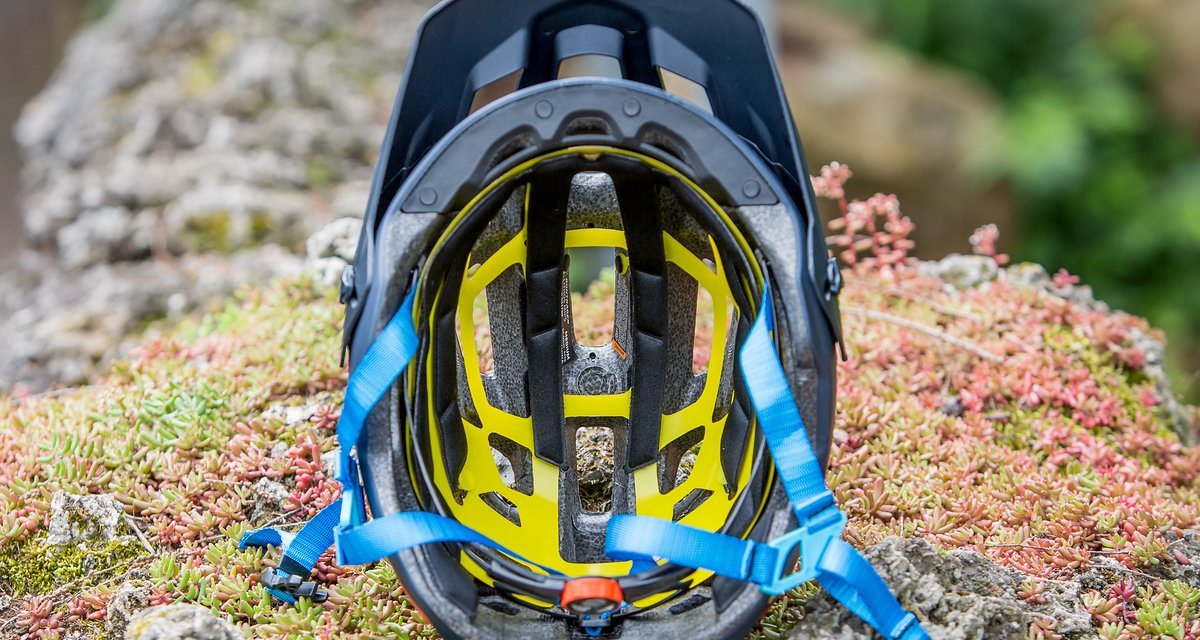Erst letzte Woche stellten Trek und Bontrager die neue WaveCel-Helmtechnologie vor. Diese soll nach eigenen Angaben dem klassischen EPS-Schaum um ein Vielfaches überlegen sein. Nun meldet sich der schwedische Hersteller MIPS zu Wort und gibt an, die beworbene Funktion von WaveCel in eigenen Tests nicht reproduziert haben zu können. MIPS bietet ein eigenes Sicherheits-System als Zusatzausstattung für Helme anderer an. Die Schweden fordern bessere Teststandards Dritter. Hier findet ihr das Statement von MIPS.
Bei MIPS handelt es sich um ein schwedisches Unternehmen, das zwar selbst keine Helme herstellt, das eigene, patentierte Schutzsystem jedoch an andere Hersteller lizenziert, die dieses dann in ihre Helme integrieren. Das MIPS-System soll die Rotationsenergie beim Aufprall verhindern und ist nach eigenen Angaben mittlerweile in 448 Helm-Modellen von 78 Herstellern verbaut.
Mit WaveCel gibt es nun einen weiteren Player auf dem Markt, der bisher exklusiv mit Bontrager kooperiert. Zum Verkaufsstart veröffentlichte der Hersteller einige Zahlen. So hat Trek offenbar gegenüber dem Bicycling Magazine geäußert, dass das System Gehirnerschütterungen bei klassischen Fahrradstürzen in 99 von 100 Fällen verhindern könnne und damit 48 Mal effektiver als reguläre EPS-Helme sein.
Genau diese Zahlen zweifelt MIPS nun öffentlich an. So will man bereits eigene Versuche mit dem System unternommen haben, deren Ergebnisse erheblich von denen von WaveCel veröffentlichten abweichen. Zudem zweifelt MIPS an, dass man aufgrund der vielen unterschiedlichen Sturzmuster und körperlichen Eigenschaften von Radfahrern überhaupt Angaben über die Wahrscheinlichkeit einer Gehirnerschütterung machen kann.
„Wir bei MIPS haben mehr als 22.000 Tests durchgeführt und wir wissen, dass nicht alle Helme gleich sicher sind – nicht einmal diejenigen, die behaupten, Drehbewegungen zu behandeln. Obwohl wir aus Verbrauchersicht hoffen, dass Bontragers Behauptungen zutreffend sind, sind wir neugierig, inwiefern sie den in unserem Labor durchgeführten Tests entsprechen. Wir sind ein Unternehmen von Wissenschaftlern, daher nähern wir uns diesem Thema im Sinne einer Zusammenarbeit, die der wissenschaftlichen Forschung innewohnt. Wenn wir gemeinsam das Radfahren für die Fahrer sicherer machen können, dann haben wir unsere Mission, die sichersten Helme herzustellen, erfüllt.“ – Johan Thiel, CEO von MIPS
As the leader in the field of rotational motion solutions for helmets, MIPS subjected the new WaveCel helmet technology to their battery of tests, with results far below WaveCel’s substantial claims of injury prevention.
Yesterday morning, WaveCel, through its exclusive licensee Bontrager, announced a new set of helmets featuring their technology, a honeycomb-like insert that attempts to decrease linear impacts and duplicate MIPS’ proven ability to lessen the rotational motion associated with potential brain injuries such as diffuse axonal injury, subdural hematoma, and concussion.
WaveCel has made sizeable claims about the efficacy of this technology, stating on their website that it’s “up to 48x more effective at preventing concussions” than a regular EPS helmet, that “adding the WaveCel technology reduced [the incidence of concussion] to 1.2%,” and, via Bicycling magazine “the company says that a helmet with WaveCel will prevent a concussion 99 out of 100 times.”
Preliminary test results of WaveCel helmets by MIPS cannot substantiate these claims. While further testing is warranted, MIPS cannot see that the helmets perform in a way that the claims Bontrager/WaveCel makes in the comparison between WaveCel and other helmets/technologies.
MIPS’ position on evaluating the possibility of a concussion resulting from a crash is that it is a highly variable event and unique to the individual impact and rider physiology. No two crashes are the same and no two people are the same, so the risk of concussion is a near-impossible claim to make. However, rotational motion itself can be measured objectively, so that is the metric MIPS can actually report and address.
For over 20 years, MIPS has been researching brain injuries and designed its system to reduce rotational motion transferred to the brain from angled impacts to the head, keeping people safer in the outdoors, from casual beginners to professional athletes. MIPS has conducted more than 22,000 tests in their state-of-the-art test lab in Sweden. MIPS’ own Dr. Peter Halldin, with Dr. Hans von Holst, has authored several academic papers on helmet impact biomechanics since 2001.
While MIPS finds it encouraging that more and more brands are acknowledging the damaging rotational motion, there is still a lack of an industry-wide standard from third party testing organizations to ensure accurate information for consumers – something MIPS called out earlier this month.
“We at MIPS have conducted more than 22,000 tests and we know that not all helmets are equally safe, not even the ones that claim to address rotational motion”, says Johan Thiel, CEO of MIPS. “While we hope from a consumer standpoint that Bontrager’s claims are accurate, we are curious to see how it lives up to the tests conducted in our lab.”
“We are a company of scientists, so we’re approaching this in the spirit of collaboration inherent to scientific research. If together, we can make cycling safer for riders, then we will have honored our mission to make the safest helmets possible.”
Was sagt ihr zu dem Disput zwischen MIPS und WaveCel?


Kommentare